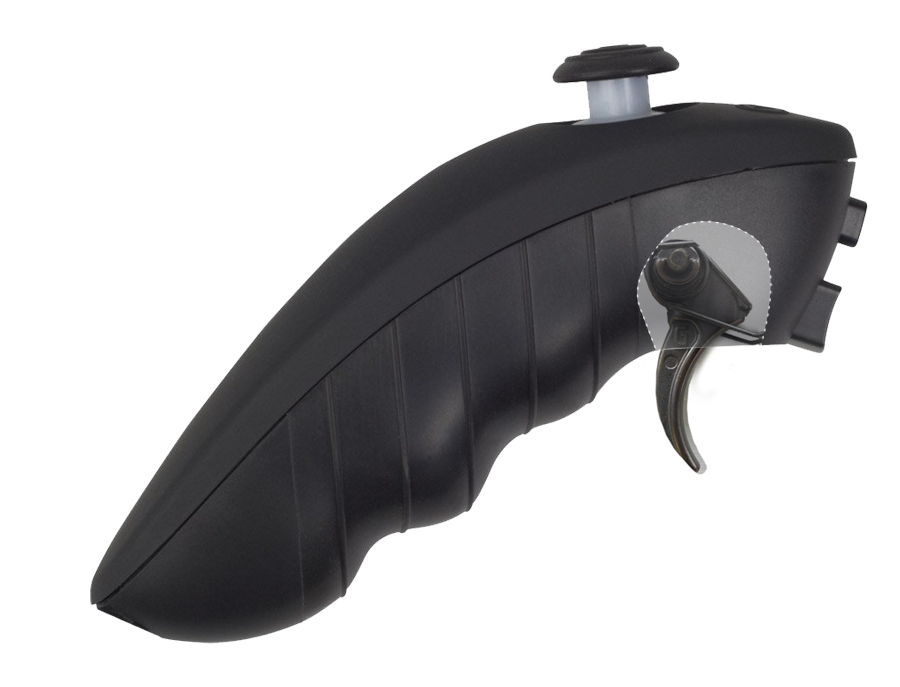I've noticed this has been a hard nut to crack for a lot of people so here is everything you need and how to do it. I'm using an uno but as long as it's an Arduino with the Atmega328P chip you should be ok.
the Sketch -- http://voodoojar.com/wiiskate/nunchuck2.zip
the Libraries -- http://voodoojar.com/wiiskate/libraries.zip
How to do it
Uncompress nunchuck2.zip to desktop
Uncompress the libraries.zip to -- Documents -> Arduino (you are replacing the existing Libraries folder with this one.)
Open the nunchuck2.ino in Arduino IDE, verify sketch and upload to your board.
wiring --

Wii to Arduino
this is pretty standard but from wiimote using the sparkfun wiinunchuck adapter https://www.sparkfun.com/products/9281
from outside
gnd to gnd
+ to 5v on adruino
d to a4 on arduino
c to a5 on arduino
Arduino to ESC
ESC gnd to gnd on arduino
ESC to digital pin 9 on arduino
Leave the ESC + alone unless you want to power your arduino with it and you know it is putting out 5v. If you do want to power your arduino from the ESC -- ESC + to arduino Vin make sure no other power it going to your arduino or you will have a bad time
Open Serial monitor and test it out. (make sure you baud on Serial Monitor is set to 115200 or you wont see anything)
You will need to make adjustments based on the type of nunchuck and ESC but this will get you 99% there.
Problem I haven't sorted out -- when turning on power sometimes the nunchuck wont communicate with the Arduino. This could be the $8 nunchuck I'm using, the order I power up parts or who knows. I ordered a wired nunchuck for testing since that's the only way I can totally eliminate connection issues for testing.
Also, thanks to the people who wrote the libraries and Mantis who wrote the sketch.
the Sketch -- http://voodoojar.com/wiiskate/nunchuck2.zip
the Libraries -- http://voodoojar.com/wiiskate/libraries.zip
How to do it
Uncompress nunchuck2.zip to desktop
Uncompress the libraries.zip to -- Documents -> Arduino (you are replacing the existing Libraries folder with this one.)
Open the nunchuck2.ino in Arduino IDE, verify sketch and upload to your board.
wiring --

Wii to Arduino
this is pretty standard but from wiimote using the sparkfun wiinunchuck adapter https://www.sparkfun.com/products/9281
from outside
gnd to gnd
+ to 5v on adruino
d to a4 on arduino
c to a5 on arduino
Arduino to ESC
ESC gnd to gnd on arduino
ESC to digital pin 9 on arduino
Leave the ESC + alone unless you want to power your arduino with it and you know it is putting out 5v. If you do want to power your arduino from the ESC -- ESC + to arduino Vin make sure no other power it going to your arduino or you will have a bad time
Open Serial monitor and test it out. (make sure you baud on Serial Monitor is set to 115200 or you wont see anything)
You will need to make adjustments based on the type of nunchuck and ESC but this will get you 99% there.
Problem I haven't sorted out -- when turning on power sometimes the nunchuck wont communicate with the Arduino. This could be the $8 nunchuck I'm using, the order I power up parts or who knows. I ordered a wired nunchuck for testing since that's the only way I can totally eliminate connection issues for testing.
Also, thanks to the people who wrote the libraries and Mantis who wrote the sketch.




